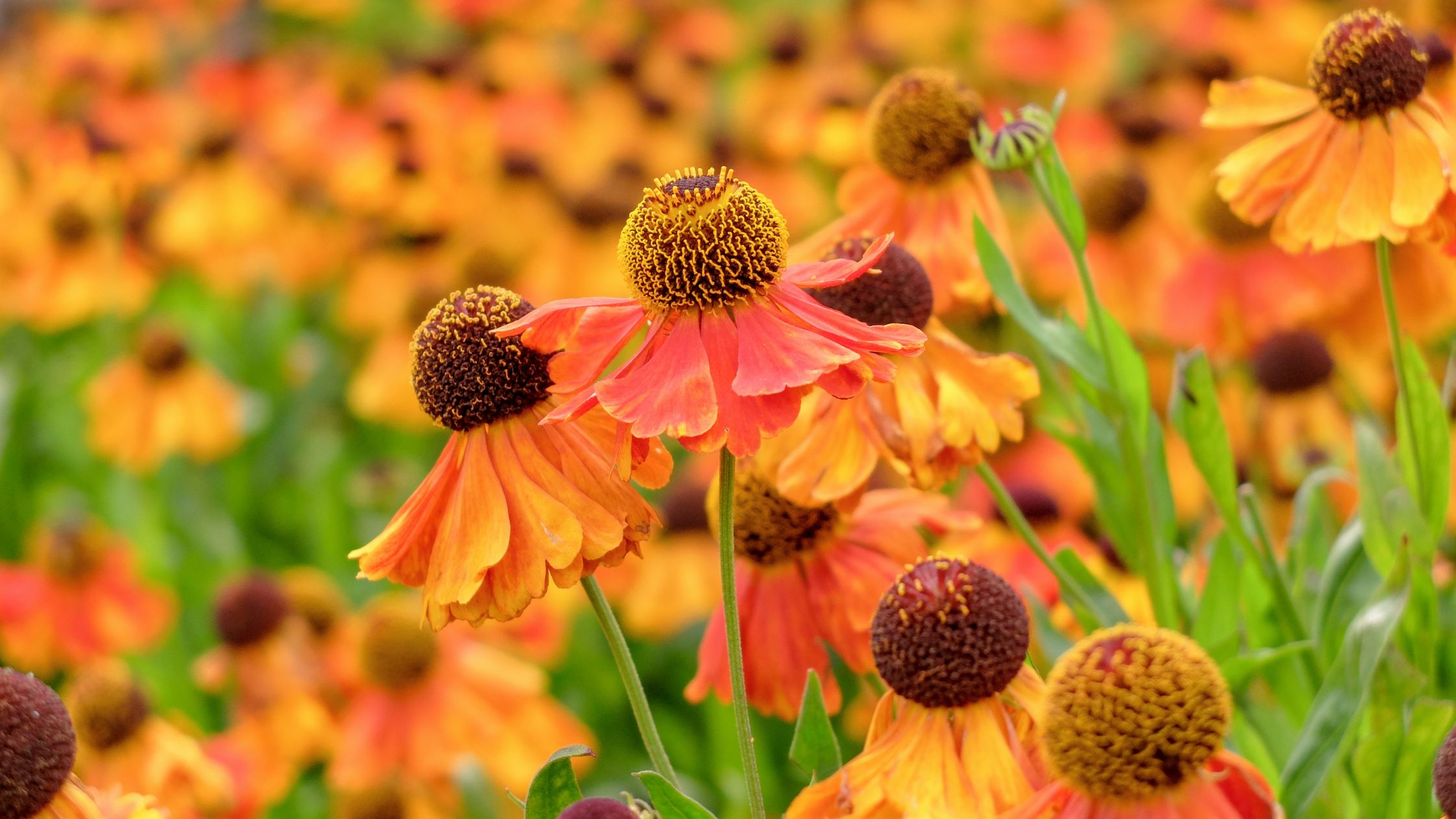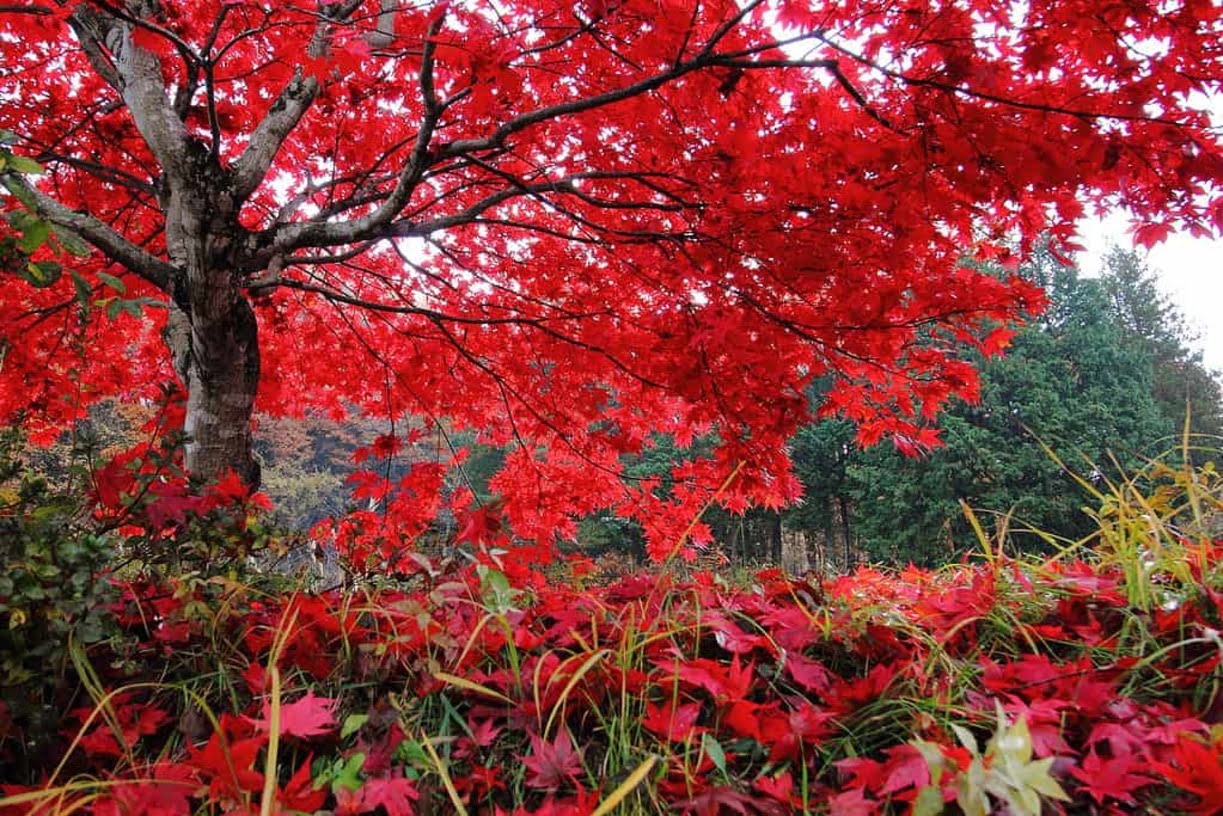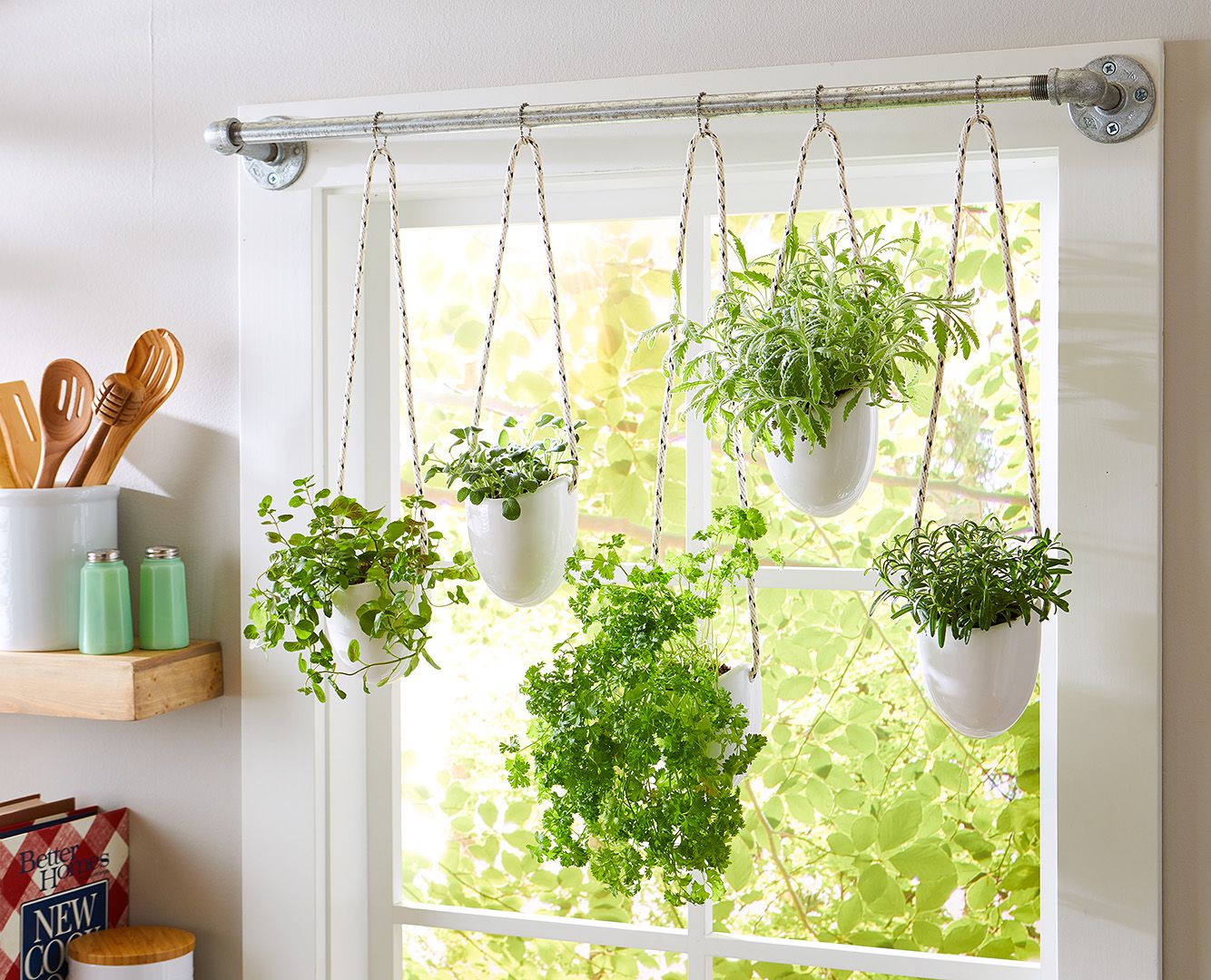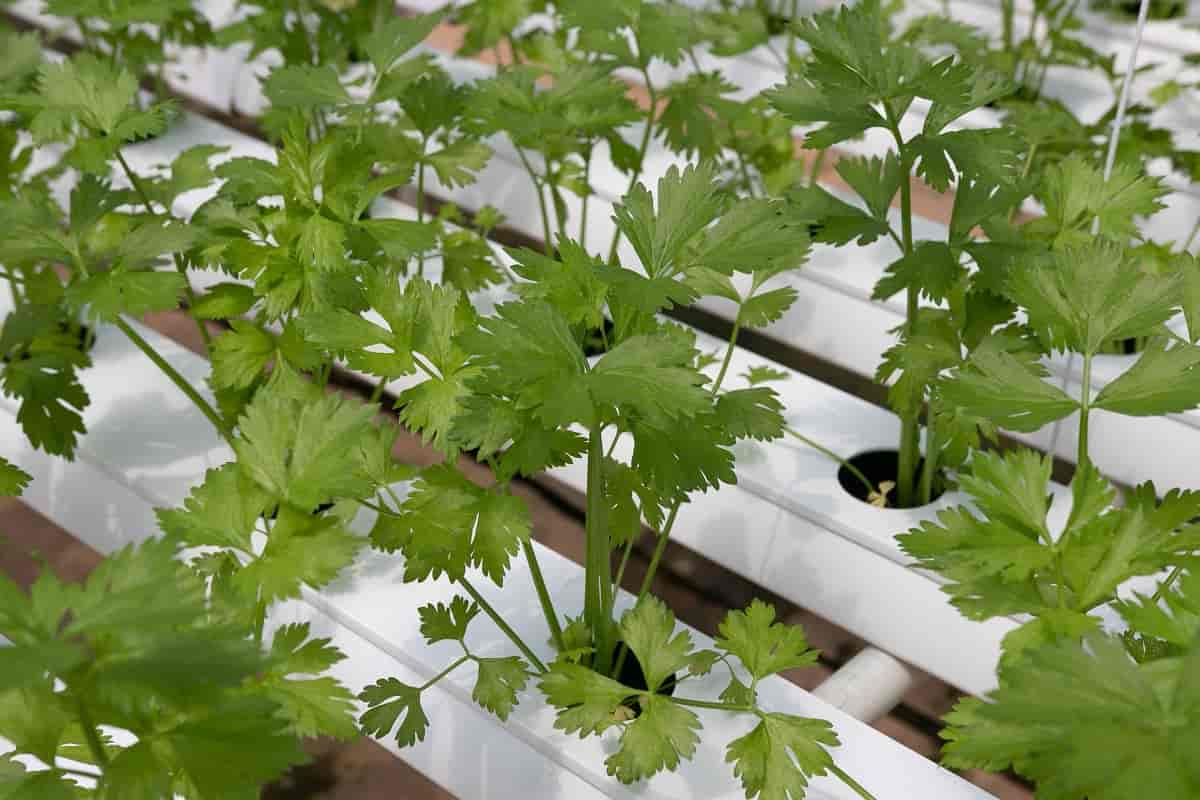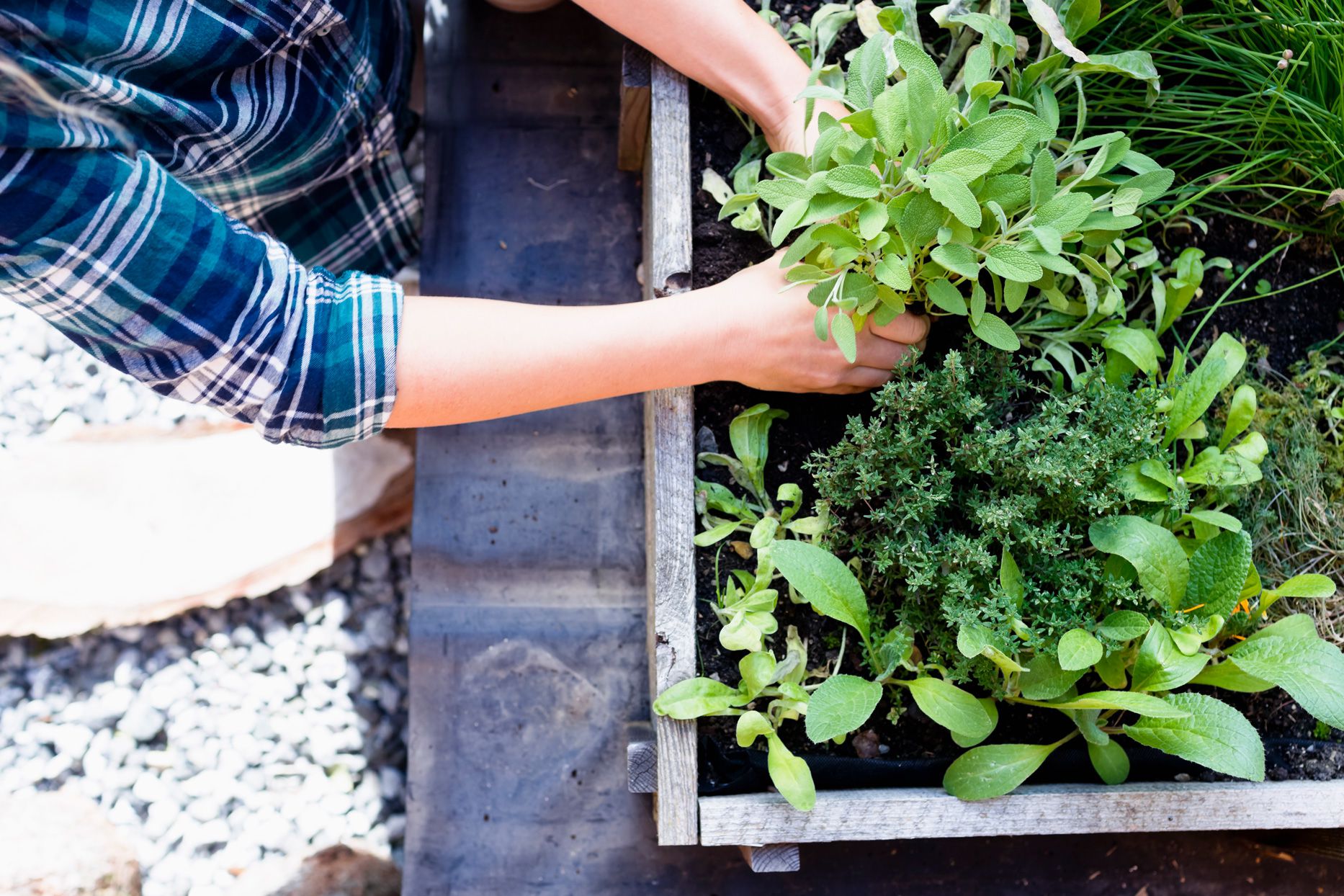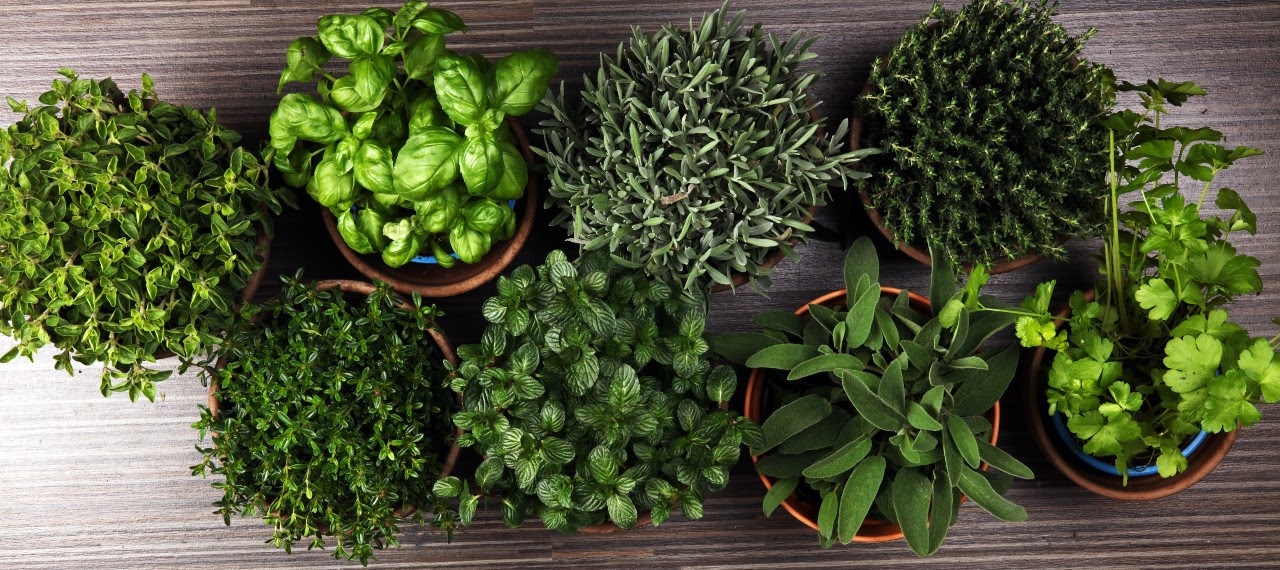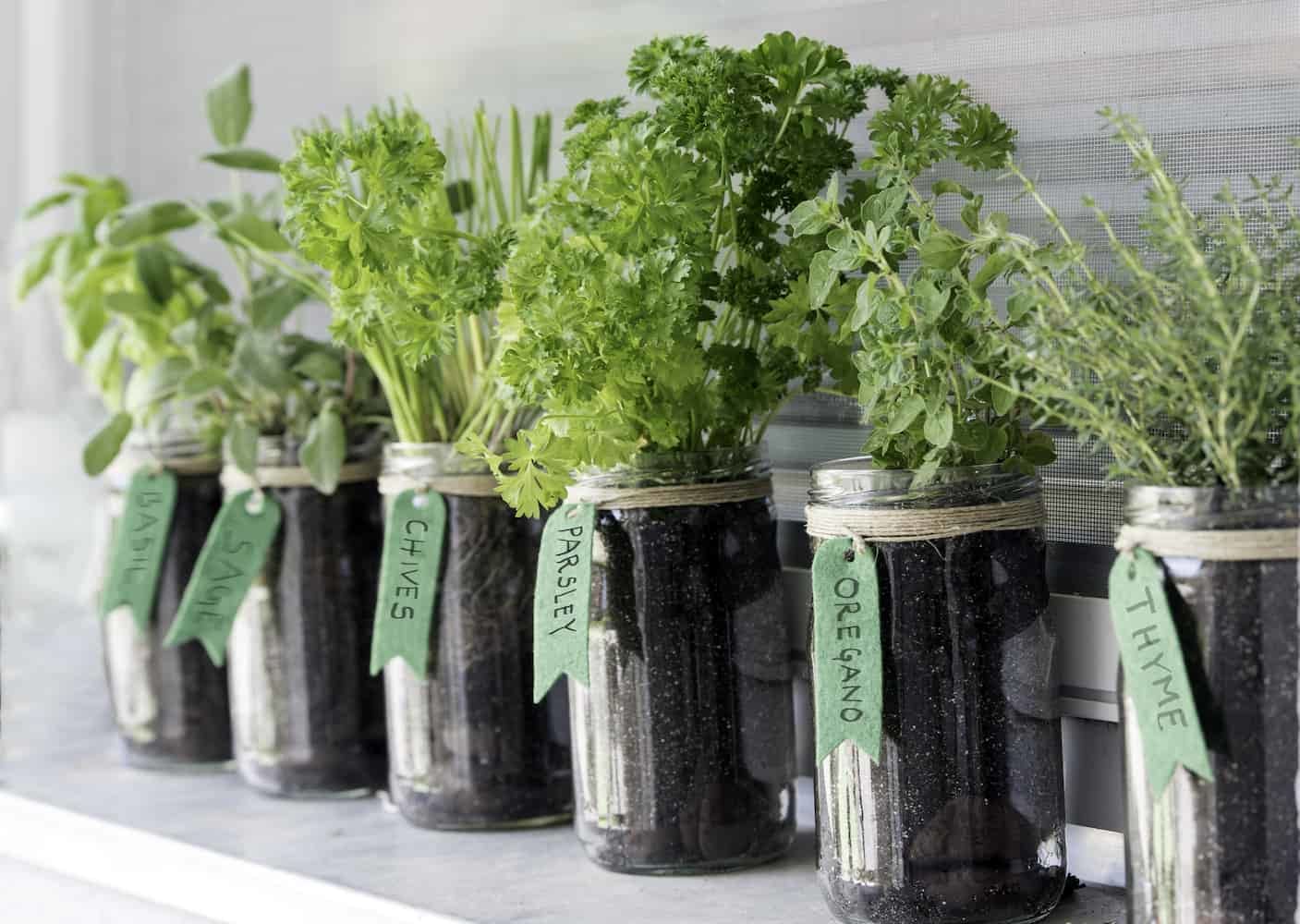Home>Gardening Techniques>Seasonal Gardening>What Herbs Grow In The Fall
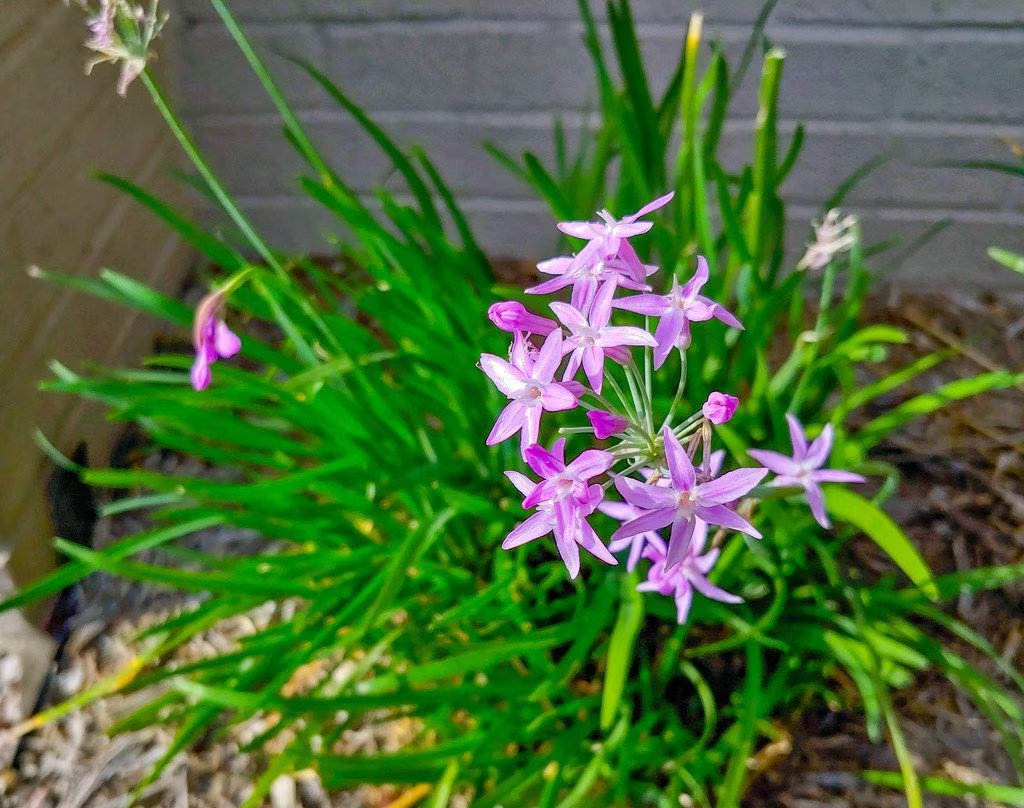

Seasonal Gardening
What Herbs Grow In The Fall
Modified: January 29, 2024
Discover the best herbs for your fall garden with our guide to seasonal gardening. Begin growing a variety of delicious and aromatic herbs this autumn.
(Many of the links in this article redirect to a specific reviewed product. Your purchase of these products through affiliate links helps to generate commission for Chicagolandgardening.com, at no extra cost. Learn more)
Table of Contents
Introduction
One of the joys of gardening is being able to grow fresh herbs throughout the year. While spring and summer are often associated with bountiful herb gardens, the fall season also offers a wonderful opportunity to cultivate your favorite herbs. As the temperatures begin to cool and the days get shorter, the fall season provides ideal conditions for certain herbs to thrive.
There are numerous benefits to growing herbs in the fall. Not only does it allow you to enjoy a wider variety of flavors in your culinary creations, but it also provides an opportunity to connect with nature during a time when many other plants are starting to wither away. Fall gardening can be a rewarding experience, and with the right selection of herbs, you can continue to enjoy fresh and flavorful ingredients well into the colder months.
Whether you have an existing herb garden or are considering starting one, the fall season offers a unique opportunity to expand your selection and experiment with new flavors. In this article, we will explore some of the popular herbs that thrive in the fall, as well as provide tips on how to successfully grow and harvest them.
Benefits of Growing Herbs in the Fall
Growing herbs in the fall not only extends the gardening season, but it also comes with several benefits. Let’s explore some of the advantages of cultivating herbs during this time of year:
- Extended Harvest: Fall gardening allows you to continue harvesting fresh herbs well into the colder months. While other plants may start to wither away, many herbs actually thrive in cooler temperatures, making fall an ideal time to expand your herb garden.
- Unique Flavor Profiles: When herbs are grown in cooler weather, they often develop richer and more intense flavors. The cooler temperatures can enhance the essential oils and compounds that give herbs their distinct tastes. This means that the same herb grown in the fall may have a more robust flavor profile compared to those grown in the spring or summer.
- Enhanced Aroma: Fall herbs not only offer enhanced flavors but also emit enticing aromas. As the weather cools, the scents of herbs become more prominent. Whether you’re using them in cooking or simply enjoying their fragrance in the garden, fall-grown herbs can provide a sensory experience that’s truly delightful.
- Less Pest and Disease Pressure: In the fall, many common garden pests and diseases start to decline or become less active. This means that fall herbs are often less prone to infestations, allowing them to grow more vigorously and with less need for intervention or pesticides.
- Opportunity for Variety: Fall gardening opens up a whole new world of herb varieties that thrive in cooler temperatures. While popular herbs like basil and cilantro may struggle as temperatures drop, other herbs like sage, thyme, and rosemary become more resilient. This allows you to diversify your herb garden and experiment with new flavors and culinary possibilities.
By taking advantage of the benefits of growing herbs in the fall, you can enjoy an extended harvest, enhanced flavors and aromas, and a wider variety of herb choices. In the next section, we will explore some of the popular fall herbs that you can consider adding to your garden.
Popular Fall Herbs to Grow
When it comes to growing herbs in the fall, there are several options that thrive in the cooler temperatures. These flavorful and versatile herbs can add depth to your dishes and bring a vibrant touch to your garden. Here are some popular fall herbs to consider:
- Sage: This herb is known for its earthy and savory flavor. Sage can withstand chilly temperatures and is perfect for fall dishes, such as roasted vegetables and hearty soups. Its aromatic leaves are also commonly used in Thanksgiving stuffing.
- Thyme: With its delicate leaves and subtle lemony flavor, thyme is a fantastic addition to fall recipes. This herb pairs well with roasted meats, stews, and vegetables. Thyme also has natural antibacterial properties and can be used to make herbal teas or infused oils.
- Rosemary: Rosemary is a hardy herb that thrives in the fall season. Its aromatic needles add a delightful fragrance to cooking and pair well with roasted potatoes, grilled meats, and hearty winter soups. You can also use rosemary sprigs to infuse flavor into olive oil or vinegar.
- Mint: While commonly associated with summer, mint actually flourishes well into the fall months. It adds a refreshing and cooling element to both sweet and savory dishes. Mint is also perfect for making herbal teas, cocktails, and garnishing desserts with a burst of flavor.
- Parsley: Known for its vibrant green color and refreshing taste, parsley is a versatile herb that can be added to a wide range of dishes. It complements both mild and bold flavors, making it a fantastic addition to soups, salads, and pasta dishes. It is a great source of vitamins A and C and adds a fresh burst of flavor to any meal.
- Chives: Chives have a subtle onion-like flavor that can elevate various dishes, including soups, salads, and baked potatoes. They are easy to grow and can often withstand cooler temperatures. Chives also produce beautiful purple flowers in the summer, adding visual appeal to your garden.
- Cilantro: Cilantro, also known as coriander, is a popular herb used in many cuisines around the world. It has a distinct, fresh, and citrusy flavor that enhances dishes like salsas, guacamole, and curries. Cilantro can tolerate cooler temperatures, but it tends to bolt quickly, so regular harvesting is essential.
These are just a few examples of the many herbs that thrive in the fall season. By incorporating these flavorful herbs into your garden, you can take advantage of their unique tastes and enhance your fall culinary creations. In the next section, we will provide some tips for successfully growing fall herbs.
Sage
Sage is an herb that shines in the fall and is a must-have addition to any fall herb garden. Its velvety leaves and distinct flavor make it a favorite for savory dishes. Here are some key points to know about growing and using sage:
Planting: Sage is a perennial herb that thrives in well-drained soil and full sunlight. It’s best to plant sage in the early fall, allowing it to establish its root system before winter. Make sure to space the plants about 18-24 inches apart to allow for proper airflow.
Care: Sage is a relatively low-maintenance herb. It prefers dry soil, so be cautious not to overwater it. Water deeply, and then allow the soil to dry out before watering again. Prune the sage plants regularly to promote bushier growth and to prevent them from becoming leggy. Sage plants are also known to attract pollinators, making them a valuable addition to any garden.
Harvesting: Sage leaves can be harvested as needed throughout the fall season. The leaves are most flavorful before the plant flowers. When harvesting, gently pinch or cut off individual leaves or small sprigs. Avoid stripping the leaves down to the stem, as this could harm the plant’s growth.
Using Sage: Sage is a versatile herb that adds a warm and earthy flavor to a wide range of dishes. It pairs well with poultry, pork, and roasted vegetables. Try adding chopped sage leaves to stuffings, soups, stews, and even infuse them in butter or oils. Sage also makes a delicious herbal tea when steeped with hot water.
Preserving Sage: To preserve sage for later use, you can either dry the leaves or freeze them. To dry sage, gather sprigs and hang them upside down in a cool, dark, and well-ventilated area. Once dried, store the leaves in an airtight container. Freezing sage involves finely chopping or puréeing the leaves and placing the mixture in ice cube trays with water or olive oil.
Sage is a wonderful herb to grow in the fall due to its robust flavor, easy care, and culinary versatility. Whether you’re using it in savory dishes, seasoning meats, or adding botanical interest to your garden, sage is a fantastic addition to any fall garden.
Thyme
Thyme is a versatile and fragrant herb that thrives in the fall season. Its delicate leaves and subtle lemony flavor make it a popular choice for adding depth to a wide variety of dishes. Here are some key points to know about growing and using thyme:
Planting: Thyme is a perennial herb that prefers well-drained soil and full sunlight. It can be planted in both pots and garden beds. When planting thyme in the fall, it’s best to choose young plants or start them from seeds indoors a few weeks before the first frost. Transplant the seedlings outdoors once the temperatures cool down.
Care: Thyme is relatively drought-tolerant once established but requires regular watering during its initial growth phase. Water the plants deeply once a week, allowing the soil to dry out between waterings. Thyme benefits from occasional pruning to encourage bushier growth and maintain its shape. Avoid over-fertilizing as it can result in leggy growth.
Harvesting: Thyme leaves can be harvested as needed throughout the fall season. The flavor is most intense just before the plant flowers. To harvest, snip off individual sprigs or leaves using sharp scissors or pruning shears. Harvesting regularly will promote new growth and ensure a healthy plant.
Using Thyme: Thyme is a versatile herb that pairs well with a wide range of foods. It complements roasted meats, vegetables, soups, stews, and marinades. Thyme leaves can be used fresh or dried. Simply strip the leaves off the stem and add them to your dish. For dried thyme, hang sprigs upside down in a well-ventilated area until dry, then remove the leaves and store in an airtight container.
Preserving Thyme: Preserving thyme ensures that you can enjoy its flavor even after the growing season ends. You can dry thyme leaves by hanging the sprigs upside down in a well-ventilated and dark area until they are completely dry. Once dry, store the leaves in an airtight container. Alternatively, you can freeze thyme leaves by removing them from the stem and placing them in small freezer bags or ice cube trays with water or olive oil.
Thyme is a wonderful herb to cultivate in the fall due to its versatility, delightful flavor, and ease of growth. Whether you’re using it to enhance the taste of your dishes or create a vibrant visual display in your garden, thyme adds a touch of elegance to both your culinary creations and your outdoor space.
Rosemary
Rosemary is a beloved herb that thrives in the fall season. With its aromatic needles and distinct flavor, rosemary adds a delightful touch to both culinary dishes and garden landscapes. Here are some key points to know about growing and using rosemary:
Planting: Rosemary is a perennial herb that prefers well-drained soil and full sunlight. It’s best to plant rosemary in the early fall or spring, allowing it to establish a strong root system before winter. When planting, ensure there is enough space between each plant to allow for proper airflow and growth.
Care: Rosemary is a relatively low-maintenance herb. It prefers dry soil, so be cautious not to overwater it. Water deeply, and then allow the soil to dry out before watering again. Rosemary thrives in warmer climates but can withstand cooler temperatures with proper care. Consider mulching around the base of the plant to insulate the roots during frosty nights.
Harvesting: Rosemary leaves can be harvested throughout the fall season when the plant is actively growing. To harvest, simply snip off the stem above a set of leaves or nodes. Avoid cutting too much from one plant at once, as it may weaken the plant. Regular pruning will encourage new growth and maintain a healthy and bushy rosemary plant.
Using Rosemary: Rosemary is a versatile herb that adds a beautiful depth of flavor to a variety of dishes. It pairs exceptionally well with roasted meats, potatoes, soups, and bread. The sturdy branches of rosemary can also serve as skewers for kebabs or be used to infuse flavors into oils or vinegars. Simply strip the needle-like leaves off the stem and add them directly to your dishes.
Preserving Rosemary: To preserve rosemary for later use, there are a few methods you can try. One option is to dry the rosemary sprigs by hanging them upside down in a cool, dark, and well-ventilated room until the leaves are dry and crumbly. Another option is to freeze rosemary by stripping the leaves off the stem, placing them in small freezer bags, and storing them in the freezer. Alternatively, you can finely chop the rosemary leaves and mix them with olive oil, then freeze the mixture in ice cube trays for convenient use in cooking.
Rosemary is a fantastic herb to grow in the fall due to its robust flavor, easy care, and versatility in various dishes. Plus, its evergreen foliage and delightful aroma can provide visual and sensory interest in your garden throughout the year.
Mint
Mint is a versatile herb that is often associated with the refreshing flavors of summer, but it can thrive well into the fall season. With its aromatic leaves and cooling taste, mint adds a burst of freshness to both culinary dishes and herbal beverages. Here are some key points to know about growing and using mint:
Planting: Mint is a hardy perennial herb that grows best in moist, well-drained soil. It can tolerate both full sunlight and partial shade. Mint plants have a tendency to spread quickly, so it’s recommended to grow them in containers or use boundaries to prevent them from taking over your garden.
Care: Mint requires regular watering, especially during dry spells. The soil should be kept consistently moist, but avoid overwatering as it can lead to root rot. Mint plants benefit from regular pruning to keep them compact and encourage new growth. Pinch off the stems regularly to prevent the plant from flowering, as this helps maintain the best flavor.
Harvesting: You can harvest mint leaves at any time once the plant is well established. Simply snip off the stems just above a node or set of leaves. Harvesting regularly not only promotes fresh growth but also helps control the plant’s spreading tendencies. For the best flavor, harvest mint leaves right before or just as the plant starts to flower.
Using Mint: Mint is a versatile herb that can be used in a wide variety of dishes and drinks. It adds a refreshing and cooling element to salads, fruit salads, cocktails, teas, and even savory dishes like lamb or Middle Eastern cuisine. Mint leaves can be used whole, torn, or chopped depending on the recipe, and the stems can be used to infuse flavors in beverages or syrups.
Preserving Mint: Mint leaves can be preserved for later use by drying or freezing. To dry mint leaves, harvest sprigs and tie them into small bundles. Hang them upside down in a well-ventilated area away from direct sunlight until completely dry. Once dry, crumble the leaves and store them in airtight containers. Alternatively, you can freeze mint leaves by rinsing them, patting dry, and placing them in freezer bags or ice cube trays with water or olive oil.
With its invigorating flavor and versatility, mint is a delightful herb to grow in the fall season. Whether you’re using it to add a fresh twist to your culinary creations or enjoying a refreshing homemade tea, mint is sure to elevate your fall cooking and bring a lively touch to your garden.
Parsley
Parsley is a versatile and vibrant herb that thrives in the fall season. With its delightful taste and fresh green leaves, parsley adds a burst of flavor and visual appeal to a variety of dishes. Here are some key points to know about growing and using parsley:
Planting: Parsley is a biennial herb that prefers moist, well-drained soil and full or partial sunlight. It can be grown from seeds or transplanted seedlings. Plant parsley in the early fall or late summer to give it enough time to establish before the first frost. Space the plants about 6-8 inches apart.
Care: Parsley requires consistent watering to keep the soil moist, but be careful not to overwater as it can lead to root rot. Mulching around the plants can help retain moisture and prevent weed growth. Regularly pinch off any flowers that develop, as this helps redirect the plant’s energy into leaf growth rather than flowering.
Harvesting: Parsley leaves can be harvested throughout the fall season as the plant grows. To harvest, simply snip off individual stems or leaves close to the base of the plant. It’s best to harvest from the outer parts of the plant, as this encourages new growth from the center. Harvesting regularly will keep the plant productive and ensure a fresh supply of parsley.
Using Parsley: Parsley is a versatile herb that can be used in a variety of dishes. It adds a fresh and bright flavor to salads, soups, stews, sauces, and marinades. Both the flat-leaf (Italian) and curly-leaf varieties can be used interchangeably, but the flat-leaf parsley is often preferred for its stronger flavor. Chopped parsley can also be sprinkled over cooked dishes as a vibrant garnish.
Preserving Parsley: Parsley can be preserved for later use by drying or freezing. To dry parsley, gather small bunches of stems and tie them together. Hang them upside down in a cool, dry, and well-ventilated area until the leaves are crispy. Once fully dried, remove the leaves from the stems and store them in an airtight container. Alternatively, you can finely chop the parsley leaves and freeze them in small portions or in ice cube trays with water or oil.
Parsley is a fantastic herb to grow in the fall due to its versatility, vibrant flavor, and ease of cultivation. Whether you’re using it as a key ingredient in your culinary dishes or as a pop of freshness on top of your meals, parsley adds a delightful touch to both your cooking and garden experience.
Chives
Chives are a flavorful and versatile herb that can thrive in the fall season. With their delicate onion-like flavor and attractive purple flowers, chives add a unique touch to various dishes and make a beautiful addition to any garden. Here are some key points to know about growing and using chives:
Planting: Chives are a perennial herb that prefers well-drained soil and full sunlight or partial shade. They can be easily grown from seeds or transplants. Plant chive seeds or seedlings in the early fall, allowing them enough time to establish their roots before winter. Space them about 6 inches apart.
Care: Chives are relatively low-maintenance herbs. They require regular watering, especially during dry spells, to keep the soil consistently moist but not waterlogged. Chives benefit from regular fertilizing with a balanced organic fertilizer. Pinch back the flowers as they appear to encourage continued leaf growth and prevent the plant from becoming too leggy.
Harvesting: Chive leaves can be harvested as soon as the plant has enough foliage to sustain growth. To harvest, snip the leaves close to the base using scissors or pruning shears. Take care not to cut too much at once, as it may weaken the plant. Regularly harvesting chives promotes new growth and ensures a fresh supply of leaves throughout the fall season.
Using Chives: Chives have a mild onion-like flavor that adds a subtle savory element to various dishes. They can be used as a garnish, chopped and sprinkled over salads, soups, omelets, and baked potatoes. Chive flowers are also edible and can be used as an attractive and flavorful addition to salads or as a garnish for visual appeal.
Preserving Chives: Chives can be preserved for later use by drying or freezing. To dry chives, harvest the leaves and spread them out in a single layer on a clean, dry surface. Allow them to air-dry until they become brittle. Once dry, store the leaves in an airtight container away from moisture and light. Alternatively, freeze chives by chopping them into small pieces and placing them in freezer bags or ice cube trays with water or oil.
Chives are an excellent herb to grow in the fall as they offer both culinary and aesthetic benefits. Whether you’re enhancing the flavor of your dishes or enjoying the visual appeal of their delicate purple flowers, chives are a wonderful addition to any fall garden.
Cilantro
Cilantro, also known as coriander, is a popular herb used in various cuisines around the world. While it tends to bolt quickly in hot weather, cilantro can thrive in the cooler temperatures of the fall season, making it an excellent herb to cultivate during this time. Here’s what you need to know about growing and using cilantro:
Planting: Cilantro prefers well-drained soil and full sunlight or partial shade. It can be planted from seeds directly in the garden or in containers. Sow the seeds in the early fall, ensuring they have enough time to establish before the first frost. Space the seeds about 6 inches apart.
Care: Cilantro requires regular watering to keep the soil slightly moist, but be careful not to overwater as it can lead to root rot. Mulching around the plants can help retain moisture and suppress weed growth. Cilantro is a cool-season herb, meaning it thrives in temperatures between 50-85°F (10-30°C).
Harvesting: Cilantro leaves can be harvested as soon as the plant has developed a sufficient amount of foliage. To harvest, snip the leaves near the base of the plant using scissors or pruning shears. It’s best to harvest before the plant begins to flower, as the leaves may become bitter once the flowers appear. Regular harvesting promotes new growth and ensures a continuous supply of fresh cilantro leaves.
Using Cilantro: Cilantro is known for its distinct fresh and citrusy flavor, which adds a delightful touch to many dishes. It is commonly used in salsas, guacamole, curries, stir-fries, and salads. The leaves are often chopped and added as a garnish for an extra burst of flavor. Cilantro stems can also be used in cooking, adding a milder flavor to dishes.
Preserving Cilantro: Cilantro leaves can be preserved for later use by drying or freezing. To dry cilantro, harvest the leaves and tie them in small bundles. Hang them upside down in a cool, dark, and well-ventilated area until they are completely dry. Once dry, crumble the leaves and store them in an airtight container. Alternatively, you can freeze cilantro by chopping the leaves and placing them in small portions or in ice cube trays with water or oil.
Cilantro is a versatile herb that brings a unique and flavorful dimension to fall cooking. Whether you’re using it in traditional dishes or experimenting with new flavors, cilantro is sure to add a vibrant and exciting element to your culinary creations.
Tips for Growing Fall Herbs Successfully
Growing herbs in the fall requires some special considerations to ensure a successful harvest. Here are some tips to help you cultivate your fall herb garden with success:
1. Choose the Right Herbs: Select herbs that are known to thrive in cooler temperatures. Some examples include sage, thyme, rosemary, mint, parsley, chives, and cilantro. These herbs are more resilient to the cooler temperatures and shorter daylight hours of the fall season.
2. Timing is Key: Plant your herbs early in the fall, allowing them enough time to establish their root systems before winter. This will give them the best chance of surviving and thriving in the cooler weather. Be mindful of the first expected frost date in your area and plan accordingly.
3. Provide Adequate Sunlight: Most herbs need full sun to grow well, even during the fall. Ensure that your herb garden receives at least 6-8 hours of direct sunlight per day. If you have limited space, consider portable containers that can be moved to optimal light conditions throughout the day.
4. Maintain Proper Soil Moisture: While it’s important to keep herbs well-watered, be cautious not to overwater them. Ensure that the soil drains well to prevent root rot. Monitor soil moisture levels and only water when the top inch of soil feels dry to the touch.
5. Mulch for Insulation: Apply a layer of organic mulch around your herb plants to help regulate soil temperature and retain moisture. This will protect the roots from extreme temperature fluctuations and keep them cozy throughout the cooler fall months.
6. Prune Regularly: Regularly prune your herbs to promote bushier growth and prevent them from becoming leggy. Removing any dead or yellowing leaves, as well as regularly harvesting mature leaves, will encourage the growth of new shoots and keep the plants healthy and productive.
7. Protect from Frost: Keep an eye on the weather forecast for any impending frosts. If frost is expected, cover your herb plants with blankets, row covers, or plastic sheets overnight to protect them from the cold. Remove the covers during the day to allow sunlight and air circulation.
8. Keep Pests at Bay: While fall often sees a decrease in pest activity, be vigilant for any signs of pests like aphids or caterpillars. Inspect your herbs regularly and take prompt action if any pests are detected. Consider using organic pest control methods to minimize the impact on beneficial insects.
9. Harvest Regularly: Harvest your herbs regularly to encourage continuous growth. Regular harvesting also prevents the herbs from bolting or flowering too quickly, which can negatively impact their flavor and productivity.
10. Extend the Season: Consider using cold frames or row covers to extend the growing season for your fall herbs. These protective structures can help trap warmth and shield the plants from harsh weather, allowing you to continue harvesting fresh herbs well into late fall or even early winter.
By following these tips, you can create an ideal environment for growing your fall herbs. Whether you’re a seasoned herb gardener or just starting out, these practices will help ensure a productive and rewarding fall herb garden.
Harvesting and Preserving Fall Herbs
Harvesting and preserving your fall herbs is essential to enjoy their flavors and benefits even after the growing season ends. Here are some tips on how to properly harvest and preserve your fall herbs:
Harvesting:
When it comes to harvesting fall herbs, timing is key. It’s best to harvest herbs in the morning after the dew has dried but before the sun becomes too intense. Here are some general guidelines for harvesting:
- For leafy herbs like sage, thyme, and parsley, start harvesting when the plant has enough foliage to sustain growth. Snip the leaves or stems just above a leaf node or set of leaves to allow for regrowth.
- For herbs like rosemary and chives, snip the desired amount of stems or leaves near the base of the plant. Avoid removing more than one-third of the plant at a time to maintain its health.
- With cilantro, harvest the leaves and stems as soon as the plant has enough foliage. Harvest before it bolts and flowers, as the leaves tend to become bitter afterwards.
Preserving:
Preserving your fall herbs is a great way to enjoy their flavors and aromas long after the growing season. Here are a few preservation methods:
- Drying: Drying is a popular preservation method for herbs. Gather small bunches of herbs, tie them together with a string, and hang them upside down in a warm, dry, and well-ventilated area. Once the leaves are completely dry and crumble easily, remove them from the stems and store them in airtight containers. Dried herbs can retain their flavor for up to a year, but it’s best to use them within six months for optimal taste.
- Freezing: Freezing herbs is an excellent way to preserve their freshness. Wash the herbs thoroughly and pat them dry. Chop the herbs into small pieces or leave them whole. Place them in sealable freezer bags or ice cube trays, and either freeze them in water or olive oil. Frozen herbs can be easily added to soups, stews, and various dishes throughout the year.
- Herb-infused Oils and Vinegars: Another way to preserve herbs is by infusing their flavors into oils or vinegars. Place fresh herb sprigs or leaves in a clean jar, fill it with your choice of oil or vinegar, and seal it tightly. Allow the jar to sit in a cool, dark place for a few weeks to allow the flavors to infuse. Strain out the herbs and store the infused oils or vinegars in a cool place.
Labeling:
It’s important to label your preserved herbs with their name and date of preservation. This ensures you can easily differentiate between different herbs and remember when they were preserved. Labeling also helps to maintain the freshness and potency of your preserved herbs.
By following the right harvesting techniques and choosing the appropriate preservation methods, you can savor the flavors and benefits of your fall herbs all year round. Whether you choose to dry, freeze, or infuse them, properly preserving your herbs will allow you to enjoy their fresh taste even when the gardening season is over.
Conclusion
Growing herbs in the fall can be a rewarding and flavorful experience. As the temperatures start to cool and the days become shorter, many herbs thrive in these conditions, adding a burst of fresh flavors to your culinary creations. With the right selection of herbs and some care and attention, you can continue to enjoy a bountiful herb garden well into the fall season.
By choosing herbs like sage, thyme, rosemary, mint, parsley, chives, and cilantro, you can explore a variety of tastes and culinary possibilities. Each herb brings its unique flavors and aromas, elevating your dishes and adding depth to your cooking. Whether you’re using them in soups, stews, marinades, salads, or as garnishes, fall herbs can transform ordinary meals into extraordinary culinary experiences.
Harvesting and preserving your fall herbs ensure that you can continue to enjoy their flavors long after the growing season ends. Whether you choose to dry them, freeze them, or make herb-infused oils and vinegars, preserved herbs can be a convenient and delicious addition to your kitchen pantry. Preserving herbs also allows you to savor the freshness and fragrance of your garden throughout the year.
Finally, it’s essential to provide the right care for your fall herbs. Pay attention to their sunlight, water, mulching, and pruning needs. Protect them from frost and pests, and harvest them regularly to encourage new growth. With proper care, your fall herb garden will flourish and provide you with a continuous supply of fresh and flavorful herbs.
So, whether you’re a seasoned herb gardener or just starting out, don’t overlook the beauty and benefits of growing herbs in the fall. Expand your culinary horizons, connect with nature, and relish in the joys of cultivating your own fresh herbs. With the right knowledge and a touch of creativity, your fall herb garden can be a source of inspiration and culinary delight throughout the season.
